You’ve probably heard of anchovies, those tiny fish that often find their way onto pizzas and into Caesar salads. But have you ever stopped to really think about their unique flavor profile?
Anchovies pack a punch of flavor that’s unlike any other ingredient in your pantry, making them a secret ingredient in the kitchen for many home cooks like myself.
Anchovies are known for their intense umami flavor, a savory taste that can elevate a dish from good to great.
So, let’s explore their taste and texture and how to use them in your cooking.
How Do Anchovies Taste?
Anchovies are a bit of a culinary paradox. They’re tiny, but their flavor is mighty. When you first bite into an anchovy, you’re hit with a wave of saltiness.

This isn’t your everyday saltiness, and it’s a deep, oceanic saltiness. But don’t let that initial burst of flavor scare you away, and there’s more to these little fish than just salt.
As the saltiness subsides, you notice the other flavors that make anchovies so unique. There’s a distinct fishiness, but it’s not overpowering.
Instead, it’s a rich, savory flavor that I can only describe as umami. It adds depth and complexity to dishes, making them taste more flavorful and satisfying.
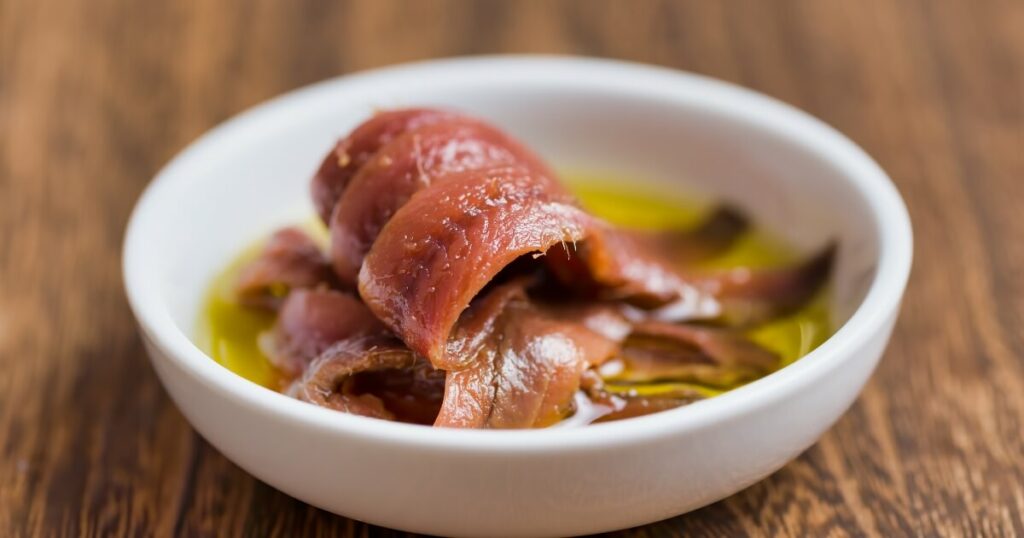
Now, let’s talk about texture. Anchovies are small and thin, with a soft, almost melt-in-your-mouth texture when cooked.
This is why they’re often used in sauces and dressings. They break down easily, infusing the dish with their unique flavor without adding any unwanted chunkiness.
Varieties Of Edible Anchovies
Anchovies come in a variety of forms, each with its own unique flavor profile:
- Fresh Anchovies: These have a milder flavor compared to their preserved counterparts. They’re slightly sweet, with a delicate fishiness that’s not overpowering.
- Salt-Packed Anchovies: These are the most intense in flavor. The salt-curing process amplifies their natural umami and brings out a deep, savory taste.
- Oil-Packed Anchovies: These are a bit more subtle in flavor. They’re still salty and savory, but the oil helps to mellow out the intensity, making them a great choice for those new to anchovies.
- Marinated Anchovies: These are often found in gourmet food stores. The marinade can vary, but it usually includes vinegar and spices, which adds a tangy note to the fish’s natural flavor.
What Does Anchovies Compare With?
Anchovies have a unique flavor, but there are a few other foods that offer a similar taste experience:
- Sardines: Like anchovies, sardines are small, oily fish. They’re less salty but have a similar umami flavor.
- Capers: While not a fish, capers have a salty, briny flavor that can be reminiscent of anchovies. They’re often used together in Mediterranean cuisine.
- Soy Sauce: This condiment is another source of umami flavor. It’s not fishy, but it has a similar depth and complexity to anchovies.
- Miso Paste: This fermented soybean paste is rich in umami, much like anchovies. It’s a staple in Japanese cooking and can be used in a similar way to anchovies to add depth to dishes.
Do Anchovies Taste Fishy?
Yes, anchovies have a fishy taste, but it’s not the off-putting kind of fishiness you might imagine. It’s more of a rich, savory fishiness that adds depth and complexity to dishes.
If you’re not a fan of fishy flavors, don’t worry.
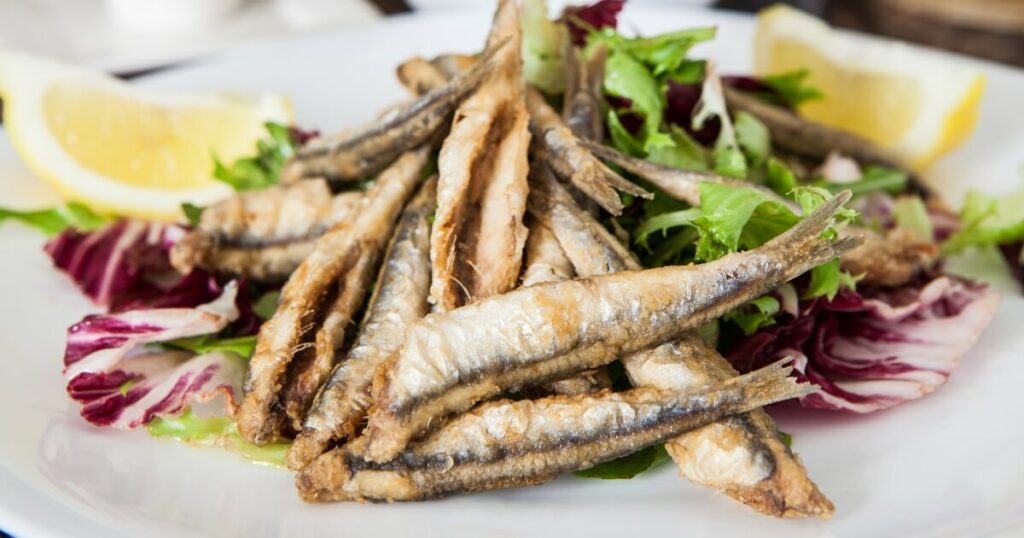
The fishiness of anchovies tends to mellow out when they’re cooked, leaving behind a subtle umami flavor which enhances the other ingredients in the dish.
And remember, a little goes a long way with anchovies. Start with a small amount and adjust to your taste.
Do Anchovies Smell Fishy?
Anchovies do have a distinct smell that can be described as fishy. This smell is more pronounced in salt-packed and oil-packed anchovies due to the preservation process.
However, much like their taste, the smell of anchovies becomes less noticeable when they’re cooked. The smell can influence the taste, making the anchovies seem more intensely flavored.
But once you get past the initial aroma, you’ll find that anchovies have a deliciously unique flavor that’s worth exploring.
What Do Anchovies Look Like?
Anchovies are small, slender fish that typically measure about 2 to 5 inches long. They have a silvery-blue color on their back that fades to a silver-white on their belly. Their bodies are compressed on the sides, giving them a thin, almost flat appearance.
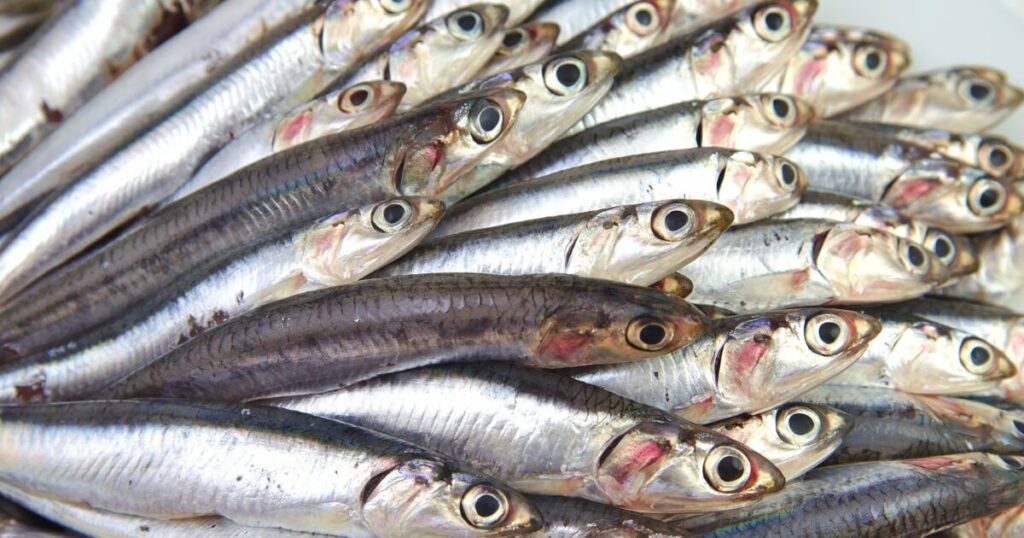
When it comes to preserved anchovies, their appearance changes slightly. Salt-packed anchovies are usually sold whole, but once they’re rinsed and filleted, they reveal a reddish-brown flesh.
On the other hand, oil-packed anchovies, which are pre-filleted, have a more uniform brown color. Despite their small size, anchovies are easily recognizable due to their distinctive shape and color.
How To Eat Anchovies
Here are a few ways you can enjoy these flavorful fish:
In Pasta
Anchovies can be melted into olive oil to create a flavorful base for pasta sauces. They add a depth of flavor that can’t be achieved with other ingredients. Try them in a classic Italian dish like spaghetti alla puttanesca.
On Pizza

Anchovies are a classic pizza topping. Their salty, umami flavor pairs beautifully with the cheese’s richness and the tomato sauce’s sweetness. Just remember, a little goes a long way!
In Sauces and Dressings
Anchovies can be used to add a savory depth to sauces and dressings. They’re used in Worcestershire sauce, remoulade, Caesar dressing, and many Mediterranean sauces.
In Salads
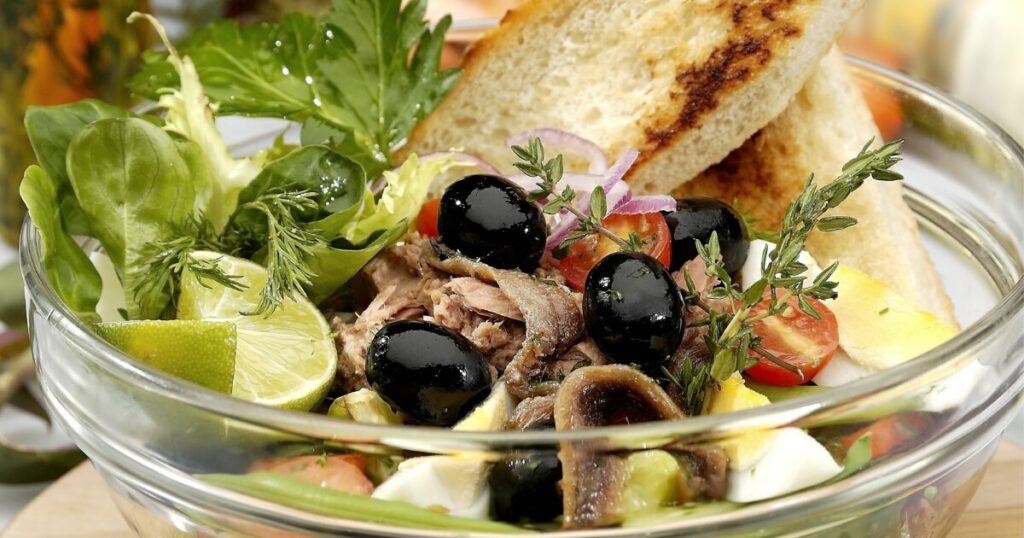
Anchovies are a key ingredient in Caesar salad dressing. They add a savory punch that balances out the creaminess of the dressing. You can also add whole anchovies to salads for a burst of flavor.
As a Snack
In some cultures, anchovies are enjoyed as a simple snack. They’re often marinated in vinegar and spices, then served with crusty bread and a glass of wine. It’s a delicious way to appreciate the unique flavor of these little fish.
How To Make Anchovies Taste Good
Anchovies are a powerhouse of flavor, but they can be a bit intense for some palates. Here are a few tips on how to make them taste even better:
Balance with Other Flavors: Anchovies are salty and savory, so they pair well with ingredients that can balance out their strong flavor. Try them with acidic ingredients like tomatoes or lemon juice or sweet ingredients like caramelized onions.
Cook Them: Cooking anchovies can help mellow out their fishiness. Try sautéing them in olive oil until they ‘melt’ and become part of the sauce. This is a common technique in Italian cooking, and it’s a great way to incorporate the flavor of anchovies without the fishiness.
Use Sparingly: Anchovies are very flavorful, so a little goes a long way. If you’re new to anchovies, start with a small amount and add more to taste.
Pair with the Right Wine: If you enjoy anchovies on their own or in a simple dish, pairing them with the right wine can enhance their flavor. A crisp, acidic white wine like Albariño or Vermentino can balance out the saltiness of the anchovies.
Quality Matters: Like with any ingredient, the quality of the anchovies can greatly affect their taste. Look for anchovies packed in olive oil or salt, as these are usually of higher quality than those packed in vegetable oil.
Remember, the key to enjoying anchovies is to keep an open mind. They might be a bit different from what you’re used to, but with the right preparation and pairing, they can be a delicious addition to your pantry.
How To Buy Anchovies
When it comes to buying anchovies, there are a few things to keep in mind to ensure you’re getting the best quality:
Fresh Anchovies
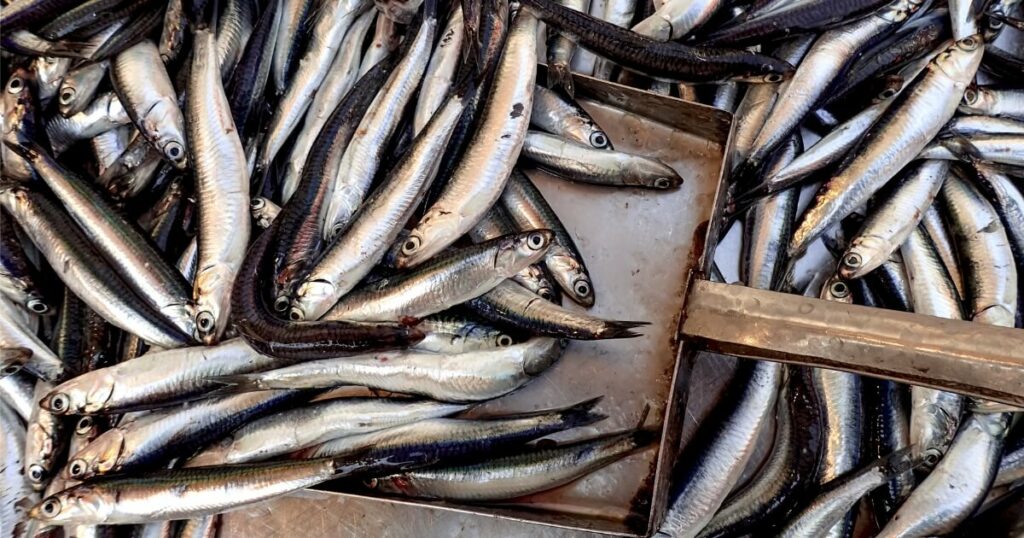
Fresh anchovies are a bit harder to find, but they’re worth seeking out if you have a local fish market or a grocery store with a good seafood section. Look for anchovies that have clear, bright eyes and shiny, silvery skin. They should smell fresh and briny, not fishy.
Salt-Packed Anchovies

Salt-packed anchovies are usually sold in cans or jars. They’re whole anchovies packed in salt, giving them a strong, intense flavor. When buying salt-packed anchovies, look for containers where the fish are packed tightly and covered in salt.
Oil-Packed Anchovies

Oil-packed anchovies are the most common type found in grocery stores. They’re usually filleted and packed in oil. Look for anchovies that are packed in olive oil, as it has a better flavor and is a sign of higher quality.
The fish should be reddish-brown, and the oil should be clear, not cloudy.
Marinated Anchovies
Marinated anchovies, also known as boquerones, are a Spanish delicacy. They’re fresh anchovies that have been marinated in vinegar and spices, resulting in a tangy, flavorful fish. They’re usually sold in the refrigerated section of gourmet food stores or online.
Anchovy FAQs
What do anchovies taste like on pizza?
On pizza, anchovies add a burst of salty, umami flavor. They pair well with the cheese’s richness and the tomato sauce’s sweetness, adding a layer of complexity to each bite.
How do you cook with anchovies?
Anchovies can be used in a variety of ways in cooking. They can be melted into olive oil to create a flavorful base for sauces, tossed into salads, or laid atop a pizza. They’re also great in dressings and marinades.
What are the components of the flavor of anchovy?
The anchovy flavor comprises a few key components: saltiness, fishiness, and umami. The saltiness comes from the preservation process, the fishiness is inherent to the anchovy itself, and the umami results from the high levels of glutamate in the fish.


